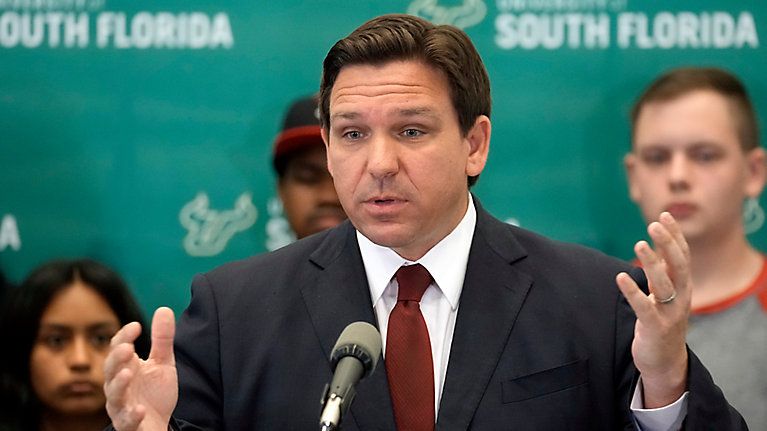TAMPA, Fla. — Dockworkers along the Gulf and East coasts were back on the picket lines Wednesday. Forty-five thousand walked off the job Tuesday as part of the first longshoremen’s strike in nearly 50 years.
The union, International Longshoremen's Association, said it wants better pay and protections from automation that could endanger jobs.
President Joe Biden weighed in on day two of the strike, noting a handful of owners control the impacted ports.
“They’ve made incredible profits — over 800% profit since the pandemic — and the owners are making tens of millions of dollars. The last thing they need is to profit off of this. It’s time to sit at the table and get the strike done,” Biden said.
ILA members lined a road leading up to Port Tampa Bay once again Wednesday evening.
“We’re holding the line. Nobody wants to be on strike,” said Nicholas DeFresco, president of the clerks and checkers with ILA Local 1691.
“We want to go up that ladder, to get on that ship, to make sure that we supply it,” said Gregory Weston, president of ILA Local 1402.
Michael Rubin, president of the Florida Ports Council, said the state has 16 ports, and Tampa is one of four that are impacted by the strike. Rubin said because not all port terminals have contracts with the U.S. Maritime Alliance (USMX), a group that represents employers in the maritime industry, effects vary by location.
“The major impact probably is on Miami, with about 50% of their cargo operations,” said Rubin. “I would say that both Everglades and Tampa are somewhere around 30-40% of their stuff. Pretty diversified in Tampa.”
Seckin Ozkul, an assistant professor of supply chain management at the University of South Florida’s Muma College of Business at the Monica Wooden Center for Supply Chain Management and Sustainability, said estimates show the strike could cost the U.S. economy anywhere from $3.8 billion to $5 billion per day. He said imports like cars, machinery and food products could be delayed, along with exports like pharmaceuticals and agricultural goods. Then there’s the impact it could have on average Americans.
“We also expect some product shortages, such as furniture, electronics, apparel and some key industrial sectors, such as automated manufacturing, could face some supply constraints,” said Ozkul.
Price increases could also be on the way. Rubin noted goods are still arriving on the west coast, as well as to ports still operating on the East and Gulf coasts.
“I think what we’re seeing is a significant potential delay and probably some shortages if this goes on for too long, but I don’t know if anybody needs to be hoarding at the moment,” said Rubin.
ILA released a statement on Tuesday saying a previous statement from USMX that said it offered union members a 50% pay increase was misleading.
“They might claim a significant increase, but they conveniently omit that many of our members are operating multi-million-dollar container-handling equipment for a mere $20 an hour. In some states, the minimum wage is already $15. Furthermore, our members endure a grueling six-year wage progression before they can even reach the top wage tier, regardless of how many hours they work or the effort they put in,” the statement said.
It went on to reiterate that it’s against an automation that eliminates jobs and demands 100% of Container Royalty monies.
“This is what it will take to bring the ILA back to the table to continue talks,” the statement said.
USMX released a statement Wednesday, saying, “USMX’s goal continues to be focused on ratifying a new Master Contract that addresses all the critical issues the parties need to bargain. Reaching an agreement will require negotiating — and our full focus is on how to return to the table to further discuss these vital components, many of which are intertwined. We cannot agree to preconditions to return to bargaining — but we remain committed to bargaining in good faith to address the ILA’s demands and USMX’s concerns.”











